

| http://people.csail.mit.edu/jaffer/SimRoof/Tropics/Lambertian |
SimRoof: Lambertian Model for Tropics |
A flat Lambertian emitter radiates uniformly over the whole hemisphere.
A coarse Lambertian dataset doing 450 radiative-transfer integrations and storing 675 net-flow values has:
The net flow for clouds at multiple altitudes is calculated simultaneously with the cloudless radiative-transfer integration (with respect to altitude).
The graph on the left shows the net infrared radiative transfer (NIRT) over the range of ceiling-heights with ground-level at 25°C and 100 kPa and with 65 mm (upper curve) to 10 mm (lower curve) of precipitable-water. The extra crosses on the right edge are the unlimited-ceiling NIRTs. The graph on the right shows it sliced the other way: lines of constant ceiling-heights (unlimited ceiling at the bottom) with precipitable-water on the abscissa.

| 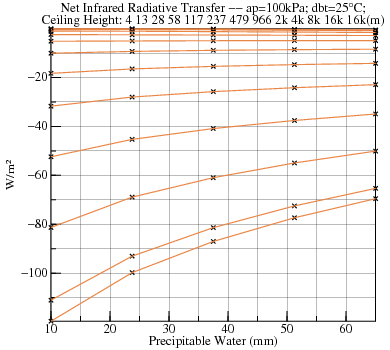
|
The next pair of graphs shows the dependence of NIRT on ceiling-height and dry-bulb-temperature.

| 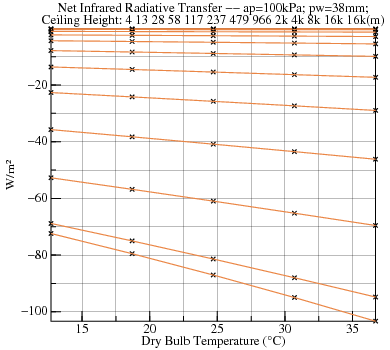
|
The next pair of graphs shows the dependence of cloudless NIRT on precipitable-water and dry-bulb-temperature.
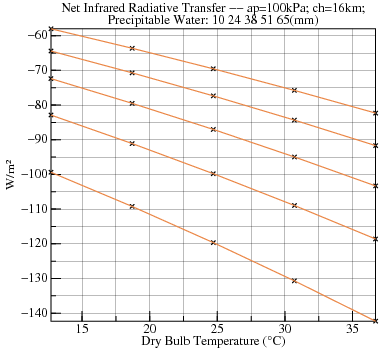
| 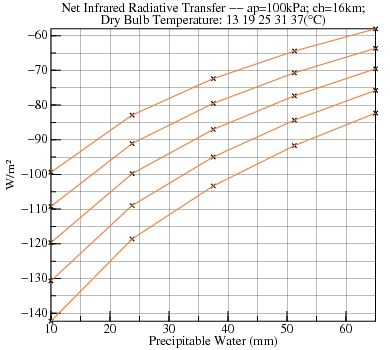
|
Finally, the dependence of NIRT on ground-level atmospheric-pressure is so small for the atmospheric-pressure range among the tropical TMY3 datasets that it can be ignored:
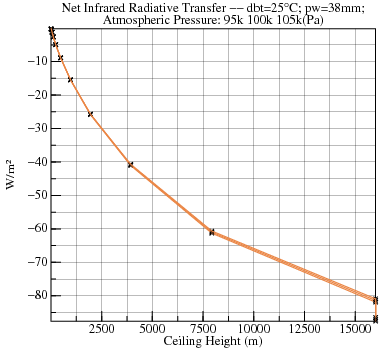
|
Copyright © 2010 Aubrey Jaffer
|
I am a guest and not a member of the MIT Computer Science and Artificial Intelligence Laboratory.
My actions and comments do not reflect in any way on MIT. | ||
| SimRoof | ||
| agj @ alum.mit.edu | Go Figure! | |